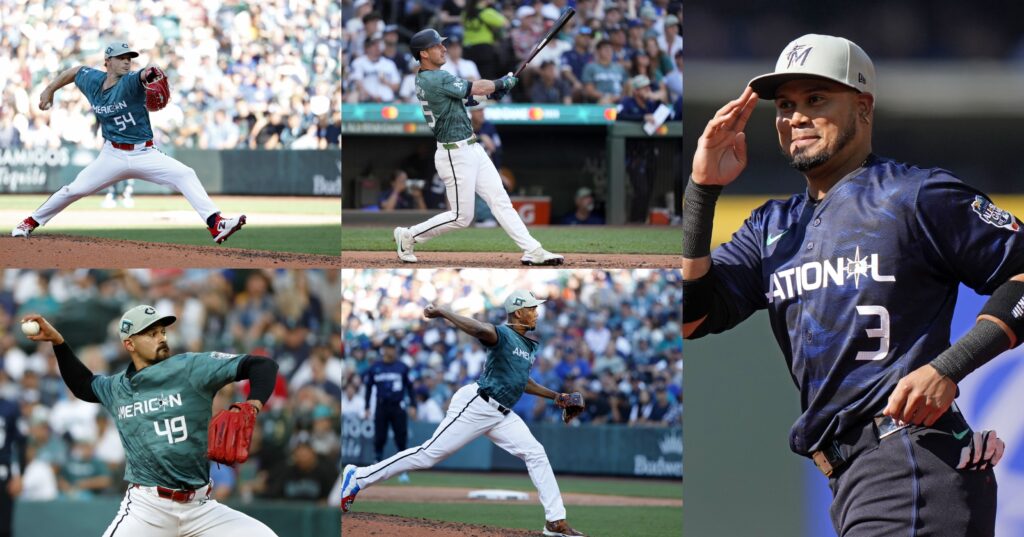On Monday, we profiled Martin Perez as someone who came out of nowhere and is having a resurgent season with the Twins.
On the offensive side, look no further than catcher Jason Castro.
Castro looks like he morphed into Mike Piazza overnight. In 23 games this season, the catcher has seven home runs with an on-base percentage of .364 and a .631 slugging percentage. That’s good for an OPS of .994.
Only his teammate Mitch Garver and Cubs masher Wilson Contreras have more impressive production numbers among catchers.
He might only be batting .244, but he’s demonstrated one of the best eyes at the plate, posting a walk rate of 14.3 percent (11 walks in 77 plate appearances). His walk rate is also second-best among catchers.
And his power has been completely unexpected. Castro is averaging a home run every 9.3 at-bats. Only Gary Sanchez (Yankees), Daniel Vogelbach (Mariners) and Garver have a better rate.
Castro doesn’t play every day like reigning NL MVP Christian Yelich of the Brewers, but Castro’s home run rate of 9.3 is almost as good as Yelich’s rate of one homer every 8.3 at-bats.
A big reason for Castro hitting the ball so well is he’s putting the barrel of the bat on the ball. Barrel is an advanced baseball statistic that is assigned to batted-ball events that require an exit velocity of 98 mph and a launch angle of 26-30 degrees.
Once again, only Sanchez has a higher barrel percentage than Castro, as 15.6 percent of Castro’s plate appearances have resulted in a barreled at-bat.
Here’s what league average catchers have done in the American league, compared to Castro:
- League average: .238/.312/.399, 23 K% and 8.5 BB%
- Castro in 2019: .246/.364/.631, 23.4 K% and 14.3 BB%
So that begs the question: Is regression to the mean around the corner for Castro?
Personally, I do think so. Especially with Garver on the injured list. Before Garver’s injury, the Twins had the ideal catching rotation with Castro, Garver and Willians Astudillo, each playing just a few times a week.
It allowed manager Rocco Baldelli to game plan how to get each player in the lineup in the best possible matchups, and the results were evident.
Now, Castro basically has to play 5-6 days a week with Garver sidelined. He’ll eventually come down to earth, but if he can at the very least keep his walk rate up while still flexing some muscle here and there, he’ll certainly be a serviceable player.
The other lingering question is Castro’s contract. He’s in the final year of a three-year deal that pays him $8 million annually.
In his nine-year career, Castro has a slash line of .232/.313/.392, which is nearly identical to what league average catchers have done this season.
He’ll also be 32-years-old next month, so he’s definitely not getting any younger. It’s too early to be pulling off trades, but Castro’s value has never been higher – and it probably won’t ever be this high again.
The safe thing to do would probably be hold on to Castro for the season, let him hit like Piazza as long as he can and then let him walk into free agency knowing that Garver is the catcher of the future.
But doing the safe thing isn’t always the most fun thing. If a team comes calling looking for a catcher and is willing to offer a top prospect or something in return that would be valuable to the big-league club, the Twins should entertain the idea.
It’s not set in stone, but it’s looking more and more like the Twins will be buyers this summer. Imagine selling from a position of strength while still having the resources to be buyers. That’s the Twins’ reality so long as Garver returns to health.
It has potential to be a win-win situation for the Twins. Until then, let’s continue to be amazed by what Castro has done this season.








